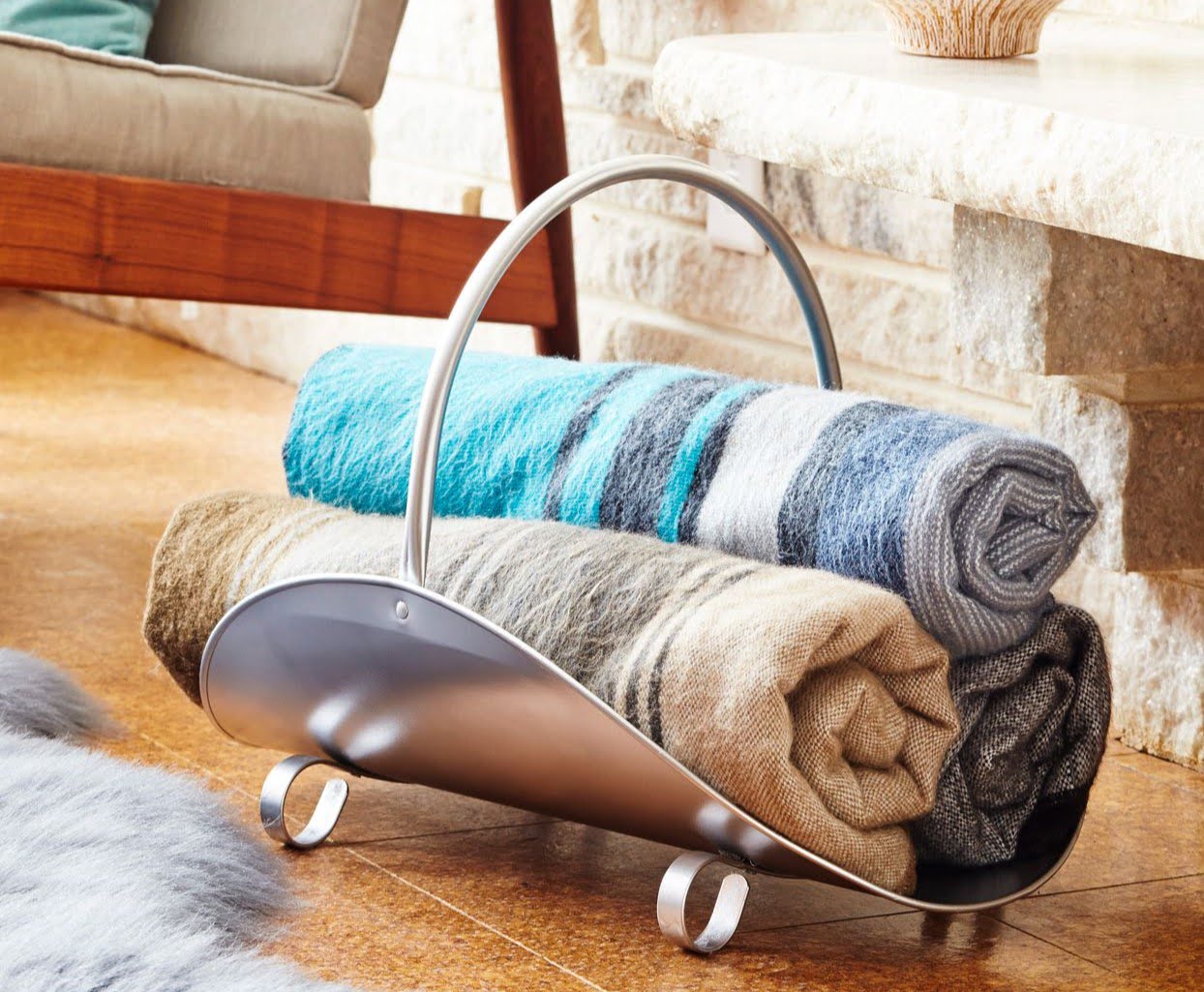

Articles
How To Store Blankets In Small Space
Modified: October 20, 2024
Discover clever storage solutions for blankets in small spaces with our informative articles. Maximize space and keep your blankets organized with these helpful tips and ideas.
(Many of the links in this article redirect to a specific reviewed product. Your purchase of these products through affiliate links helps to generate commission for Storables.com, at no extra cost. Learn more)
Introduction
Welcome to a guide on how to store blankets in a small space! Blankets are essential for comfort and warmth, especially during the colder months. However, finding an efficient storage solution for blankets can be a challenge, especially when you are short on space.
In this article, we will explore various tips and strategies to help you effectively store your blankets in a small space. From different folding techniques to utilizing underbed storage and exploring creative storage solutions, we have got you covered.
Whether you are living in a small apartment, dorm room, or simply looking to maximize space in your home, these ideas will help you keep your blankets organized and easily accessible while saving valuable space.
So, let us dive into the world of blanket storage and discover the best ways to keep your blankets tidy and within reach, no matter how limited your space may be.
Key Takeaways:
- Efficiently store blankets in small spaces by utilizing underbed storage, hanging solutions, and creative shelf ideas. Proper folding and labeling techniques help maximize space and keep blankets organized and accessible.
- Consider using vacuum-seal bags, storage ottomans, or benches to preserve and store blankets. Utilize closet space, rolling storage, and DIY underbed storage for efficient and stylish blanket organization.
Read more: How To Store Blankets Without A Closet
Tips for Folding Blankets
Properly folding your blankets is the foundation for effective storage. Here are some tips to ensure your blankets are neatly folded:
- Remove any wrinkles: Before folding, make sure your blankets are free from wrinkles or creases. This will help them lay flat and stack easily.
- Find a flat surface: Look for a clean and spacious area, such as a bed or a clean floor, to fold your blankets.
- Matching corners: Align the corners of your blanket to make sure they are even. This will create a neater fold.
- Fold in thirds: Take one side of the blanket and fold it towards the center. Then, fold the other side towards the center, overlapping the first fold. This will create a neat rectangular shape.
- Size-based folding: If you have blankets of different sizes, consider folding larger ones in half and smaller ones in quarters for a consistent and organized look when storing them.
- Labeling: If you have multiple blankets, labeling them with tags or labels can make it easier to identify the right one without unfolding each blanket.
By following these folding techniques, you can minimize the space required to store your blankets and easily locate the one you need.
Utilizing Underbed Storage
The space under your bed is often underutilized, but it can provide excellent storage for your blankets. Here are some ideas for utilizing underbed storage:
- Underbed storage bins: Invest in low-profile storage bins or containers specifically designed to fit under beds. These bins are perfect for storing folded blankets and can easily slide in and out.
- Vacuum-seal bags: If you want to save even more space, consider using vacuum-seal bags. These bags remove excess air and compress your blankets, allowing you to store more while minimizing volume.
- Rolling storage carts: Another option is to use rolling storage carts with shallow drawers. These carts can easily slide under the bed, providing a convenient and accessible storage solution.
- DIY underbed storage: If you are feeling crafty, you can create your own underbed storage using repurposed crates or boxes. Simply attach wheels or casters to make them easily movable.
By utilizing the space under your bed, you can keep your blankets organized and out of sight, while still having them readily available whenever you need them.
Hanging Blanket Storage Solutions
If you have limited floor space, hanging your blankets can be a smart storage solution. Here are some ideas for hanging blanket storage:
- Wall-mounted hooks: Install wall-mounted hooks to hang your blankets vertically. This not only saves space but also adds a decorative touch to your room.
- Ladder blanket rack: Use a wooden or metal ladder to create a stylish blanket rack. Lean the ladder against the wall and drape your blankets over the rungs for a chic and functional storage solution.
- Clothing rack: If you have a clothing rack or garment rack, consider using it to hang your blankets. This is a great option for blanket collections or for displaying your favorite blankets as a decorative element in the room.
When hanging your blankets, make sure to fold them neatly and evenly distribute the weight to prevent any strain on the hooks or racks.
By utilizing hanging storage solutions, you can free up valuable floor space while showcasing your blankets as a stylish and functional part of your home decor.
Rolling and Storing Blankets in Baskets
If you prefer a more rustic and cozy storage solution, using baskets can be a great option. Here is how you can roll and store your blankets in baskets:
- Select the right size basket: Choose a basket that is large enough to accommodate your folded or rolled blankets. Opt for a basket with high sides to prevent the blankets from falling out.
- Fold or roll your blankets: Depending on the size and thickness of your blankets, you can either fold them neatly or roll them up. Rolling works especially well for thicker or chunkier blankets.
- Arrange the blankets: Place the folded or rolled blankets inside the basket, layering them one on top of the other. Make sure to arrange them in a visually pleasing way, with larger blankets on the bottom and smaller ones on top.
- Label the baskets: If you have multiple baskets or different types of blankets, consider labeling each basket to easily identify the contents without having to open them.
- Stack or nest the baskets: Stack the baskets on top of each other to save space, or nest them inside each other when not in use to free up even more space.
Using baskets not only provides a charming and rustic storage solution but also allows for easy access to your blankets whenever you need them.
Whether you place the baskets in a corner of the room, under a console table, or on a shelf, they will add a touch of warmth and organization to your space.
Consider using vacuum storage bags to compress and store blankets in a small space. These bags can reduce the volume of the blankets, making them easier to store in closets or under beds.
Read more: How To Store Wigs In Small Spaces
Vacuum-Seal Bags for Blanket Storage
When it comes to maximizing space and keeping your blankets well-preserved, vacuum-seal bags are a game-changer. Here is how you can use vacuum-seal bags for blanket storage:
- Select the right size bags: Choose vacuum-seal bags that are large enough to accommodate your blankets.
- Fold or roll your blankets: Properly fold or roll your blankets before placing them inside the vacuum-seal bags. This will help maximize space and ensure the bags seal properly.
- Place the blankets in the bags: Carefully insert the folded or rolled blankets into the bags, making sure not to overfill them. Leave some extra space at the top for the vacuum-sealing process.
- Seal the bags: Follow the manufacturer’s instructions to seal the bags. Most vacuum-seal bags require you to use a vacuum cleaner or a handheld pump to remove the air from the bags.
- Store the bags: Once the bags are sealed, you can store them in various places, such as under the bed, in a closet, or even in a storage unit. The compressed bags will save you a significant amount of space.
- Checking periodically: It’s a good idea to check the bags periodically to ensure the seals are intact and there are no signs of moisture or damage. This will help preserve the quality of your blankets.
Vacuum-seal bags are particularly useful if you have limited space or need to store your blankets for a long time, such as during the warmer months. They provide excellent protection against dust, mold, and moisture, keeping your blankets fresh until you need them again.
Just keep in mind that vacuum-seal bags may not be suitable for very delicate or heirloom blankets. Use your discretion to determine if this storage method is appropriate for your specific blankets.
Creative Shelf Storage Ideas
If you have available shelf space, it can be a fantastic opportunity to store and display your blankets. Here are some creative shelf storage ideas:
- Open shelves with fabric bins: Install open shelves and use fabric bins or baskets to neatly store your folded blankets. Choose bins that match your decor and label them for easy identification.
- Blanket ladder on shelves: Place a decorative blanket ladder on your shelves, allowing you to hang and showcase your favorite blankets while still utilizing the shelf space below.
- Dividers and compartments: Use dividers or storage compartments on your shelves to separate and organize your blankets. This way, you can easily access the specific blanket you need without disturbing the rest.
- Showcase with bookends: Use stylish bookends to create small sections within your shelves dedicated to displaying and storing blankets. This adds an aesthetic touch to the overall look.
- Roll and stack: Instead of folding, roll your blankets and stack them on shelves. This not only saves space but also adds an interesting visual element to your storage arrangement.
- Integrate lighting: Consider adding LED strip lights or small spotlights behind or underneath your shelves to create a warm and inviting ambiance while highlighting your blanket collection.
Shelf storage allows you to optimize vertical space and transform your blankets into decorative elements in your room. Additionally, having your blankets within reach makes it convenient to grab one whenever you need some cozy comfort.
Be sure to regularly dust and clean your shelves to keep your blankets fresh and free from debris.
Maximizing Closet Space for Blankets
If you have a closet that needs some organization and you want to make the most of the space for your blankets, here are some tips to consider:
- Use hanging storage: Install hanging shelves or fabric organizers in your closet to create extra space for folded blankets. This allows you to utilize the vertical space inside the closet efficiently.
- Add hooks: Mount hooks on the back or side walls of the closet to hang blankets. This is a great way to maximize space and keep your blankets visible and easily accessible.
- Stack on shelves: If you have shelves in your closet, stack folded blankets vertically to make the most of the available space. Use dividers or storage bins to keep the stacks organized and prevent them from toppling over.
- Utilize the floor space: If your closet has floor space, consider placing storage baskets or bins on the floor to store rolled blankets. This helps to maximize the entire closet area.
- Utilize the door: Take advantage of the back of the closet door by attaching an over-the-door organizer or hooks to hang smaller blankets or throws.
- Consider drawer storage: If your closet has drawers, dedicate specific drawers to store your blankets. You can fold or roll them and stack them neatly inside.
- Rotate seasonal blankets: If you have a collection of blankets for different seasons, store the ones you don’t currently need in vacuum-seal bags or underbed storage, freeing up space in your closet.
By employing these tactics, you can transform your closet into an efficient storage space for your blankets, optimizing organization and accessibility.
Ensure you keep the closet tidy and periodically assess the condition of your blankets to prevent any damage or musty odors.
Blanket Storage Ottoman or Bench
A storage ottoman or bench can serve as a dual-purpose furniture piece, providing a comfortable seating option while also offering hidden storage for your blankets. Here’s how you can utilize a storage ottoman or bench for blanket storage:
- Select the right size: Choose a storage ottoman or bench that is spacious enough to accommodate your blankets. Consider the dimensions of your blankets to ensure they will fit inside.
- Opt for a lift-top design: Look for a storage ottoman or bench that features a lift-top design. This allows you to easily access the storage space beneath the seat without removing any cushions.
- Organize with fabric bins or dividers: To keep your blankets organized inside the ottoman or bench, use fabric bins or dividers to separate different blankets or categories. This ensures easy retrieval and prevents the blankets from getting tangled.
- Utilize the space efficiently: Fold or roll your blankets neatly before placing them inside the ottoman or bench. This will maximize the available space and allow you to store more blankets.
- Coordinate with your decor: Choose a storage ottoman or bench that complements your interior design style. Whether it’s a sleek and modern design or a cozy and traditional look, finding a piece that blends seamlessly with your decor enhances the overall aesthetic of the room.
- Consider additional functionality: Some ottomans or benches come with extra features like built-in drawers or shelves. These can be useful for storing smaller blankets or other items alongside your larger ones.
A storage ottoman or bench not only provides a practical storage solution but also adds a touch of elegance to your living space. It allows you to keep your blankets neatly tucked away while providing extra seating or a footrest when needed.
Place the storage ottoman or bench in your living room, bedroom, or entryway to create a functional and stylish storage solution for your blankets.
Read more: How To Store Pigs In A Blanket
Conclusion
Storing blankets in a small space doesn’t have to be a challenge. With a little creativity and clever organization, you can find effective storage solutions that keep your blankets tidy and easily accessible. By implementing the tips and ideas mentioned in this article, you can make the most of every inch of space in your home.
Whether you choose to fold and stack your blankets, utilize underbed storage, hang them on hooks or racks, store them in baskets or vacuum-seal bags, display them on shelves, maximize closet space, or utilize a storage ottoman or bench, the key is to find what works best for your space and personal preferences.
Remember to properly fold or roll your blankets before storing them to minimize space and keep them in good condition. Don’t forget to label your storage containers or baskets for easy identification.
Additionally, it’s important to periodically check and clean your stored blankets to prevent any dust build-up or damage. If you have seasonal blankets, consider rotating them to optimize storage space.
By implementing these storage techniques, you can keep your blankets organized, accessible, and in good condition, ensuring that you can enjoy their warmth and comfort whenever you need them.
So, embrace the challenge of storing blankets in a small space and discover the possibilities of creating an organized and cozy environment in your home.
Frequently Asked Questions about How To Store Blankets In Small Space
Was this page helpful?
At Storables.com, we guarantee accurate and reliable information. Our content, validated by Expert Board Contributors, is crafted following stringent Editorial Policies. We're committed to providing you with well-researched, expert-backed insights for all your informational needs.


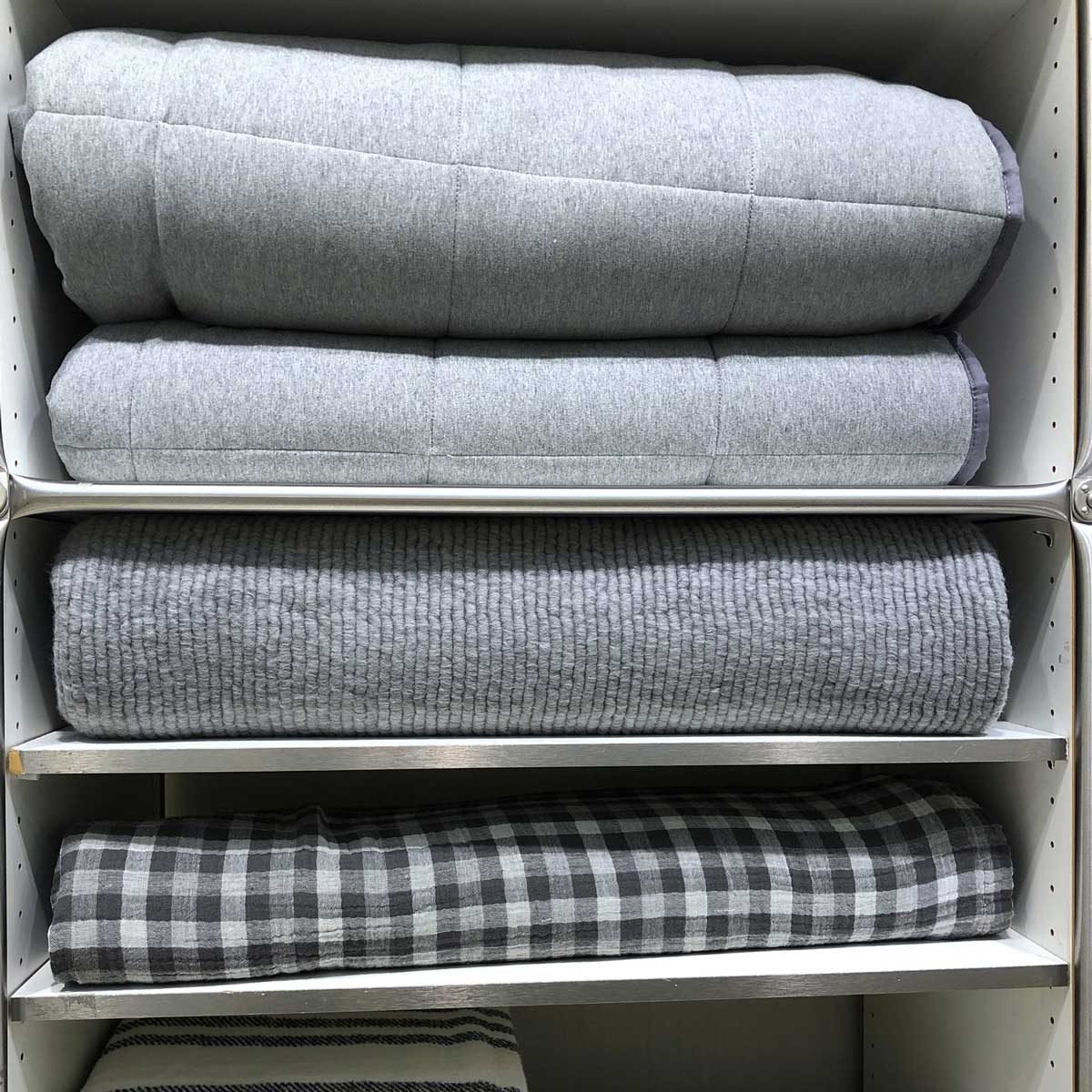
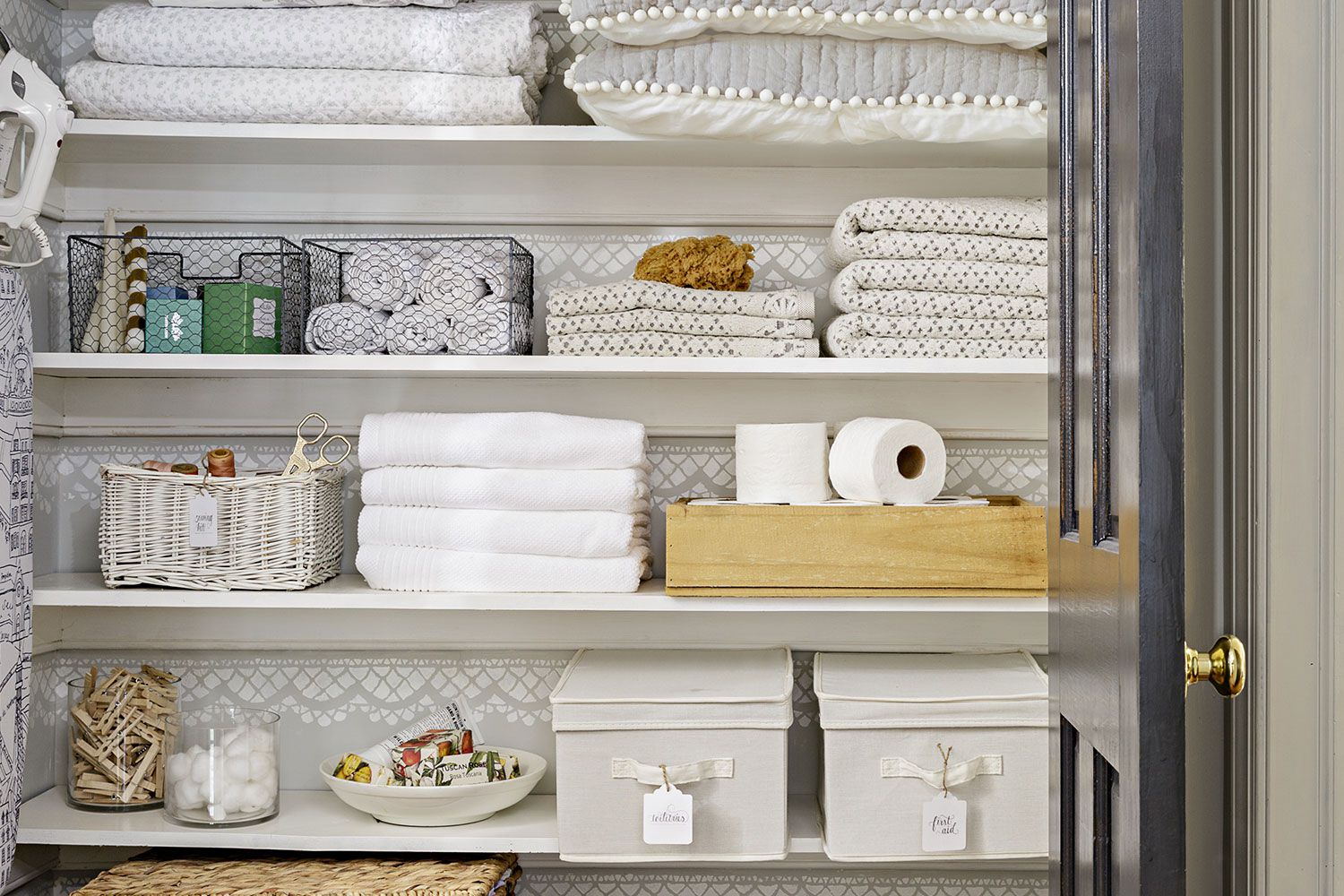

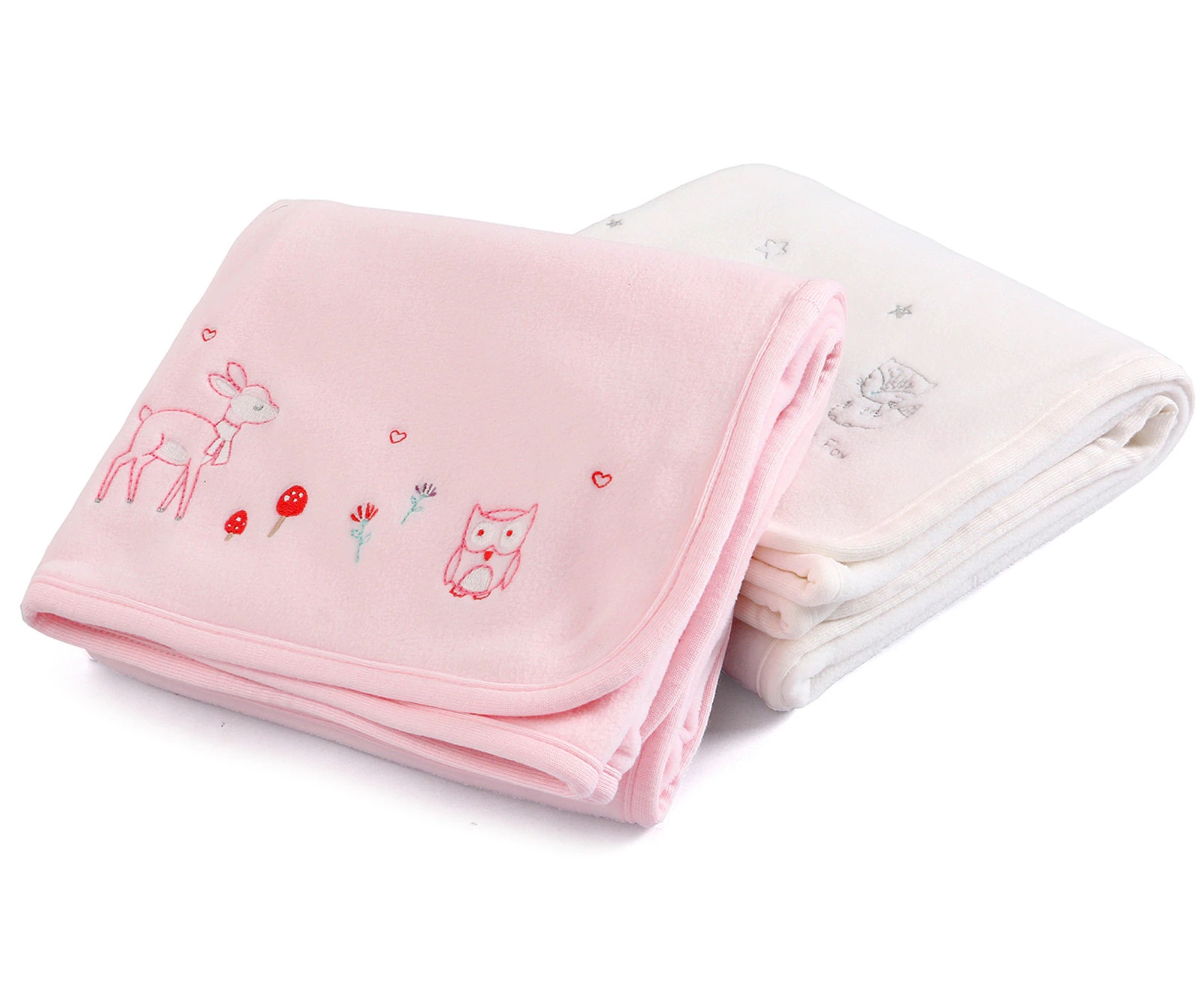
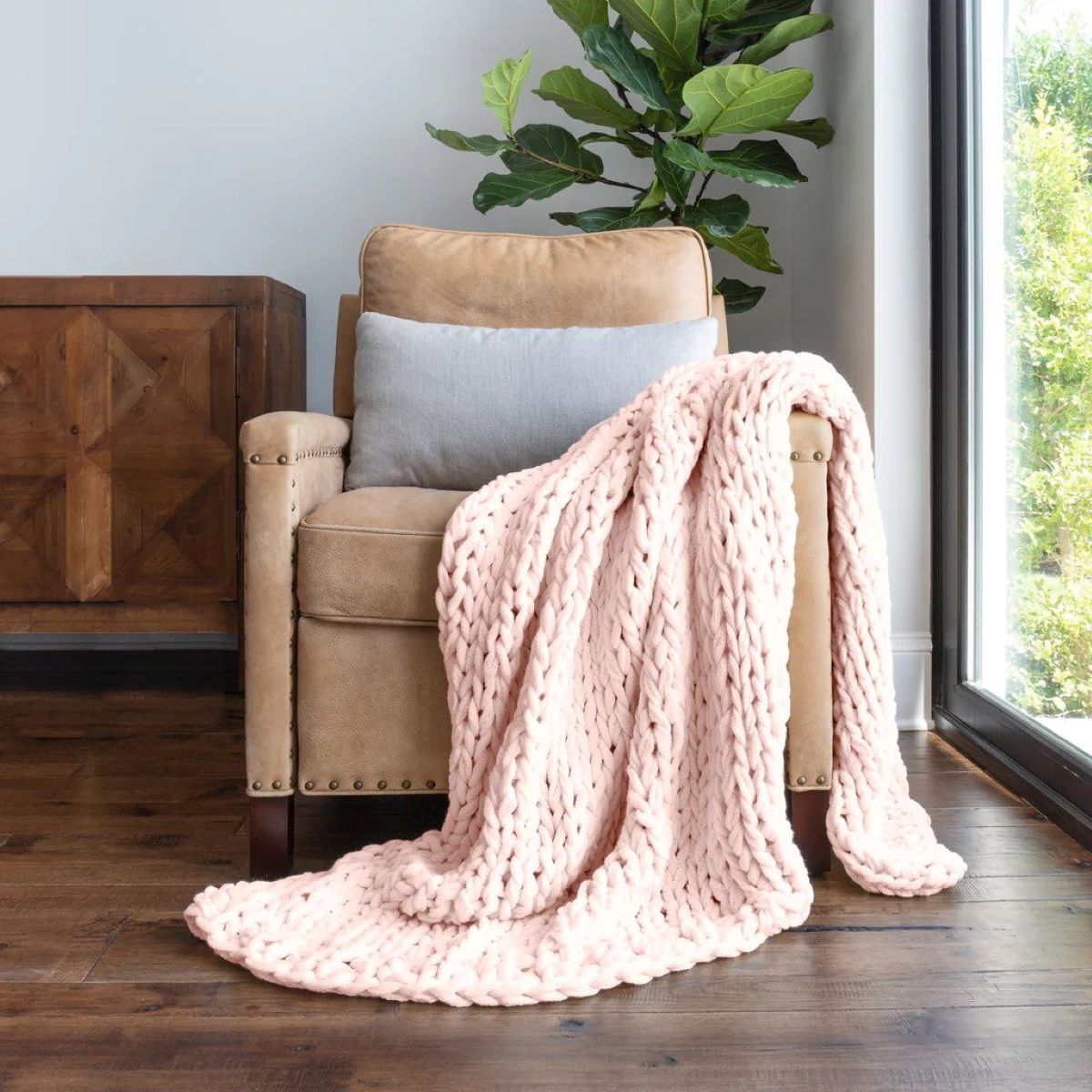

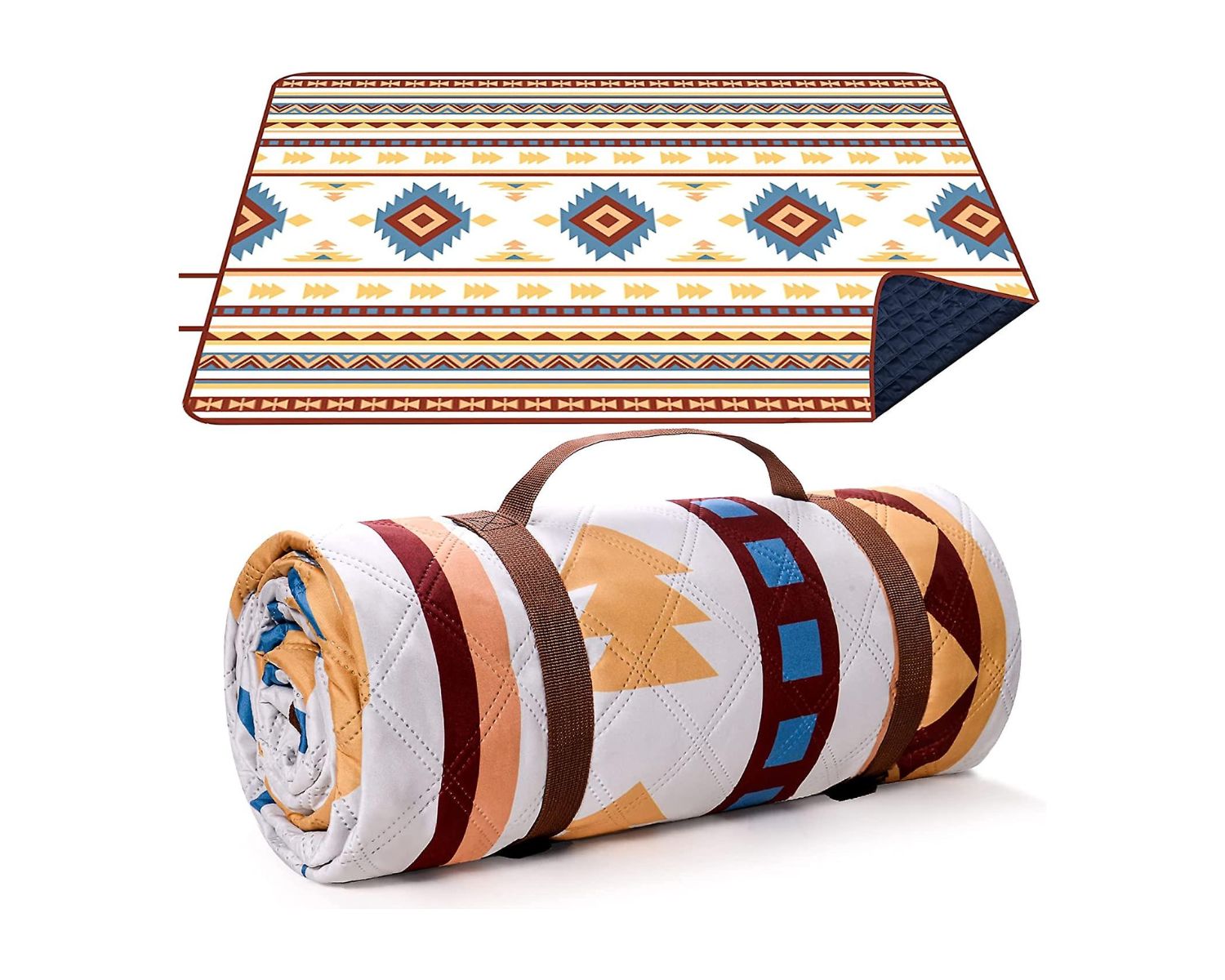
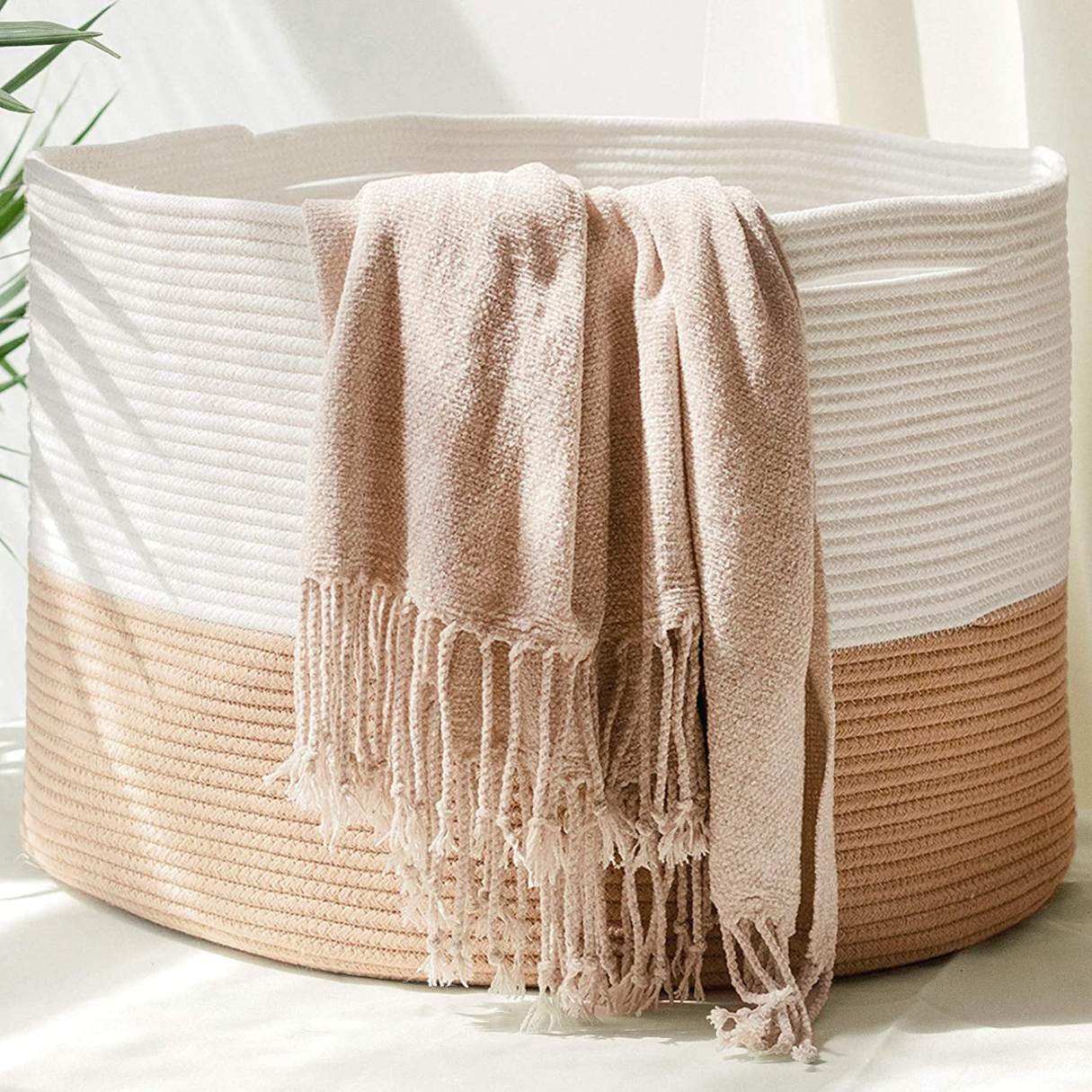

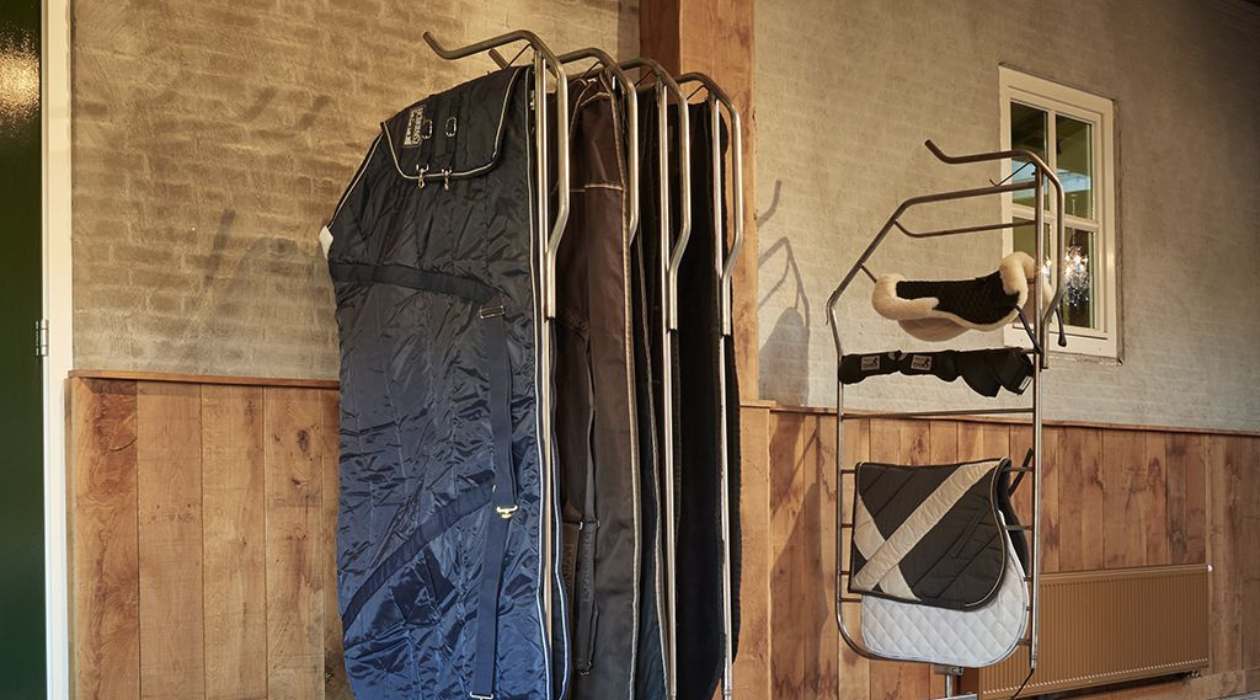


0 thoughts on “How To Store Blankets In Small Space”